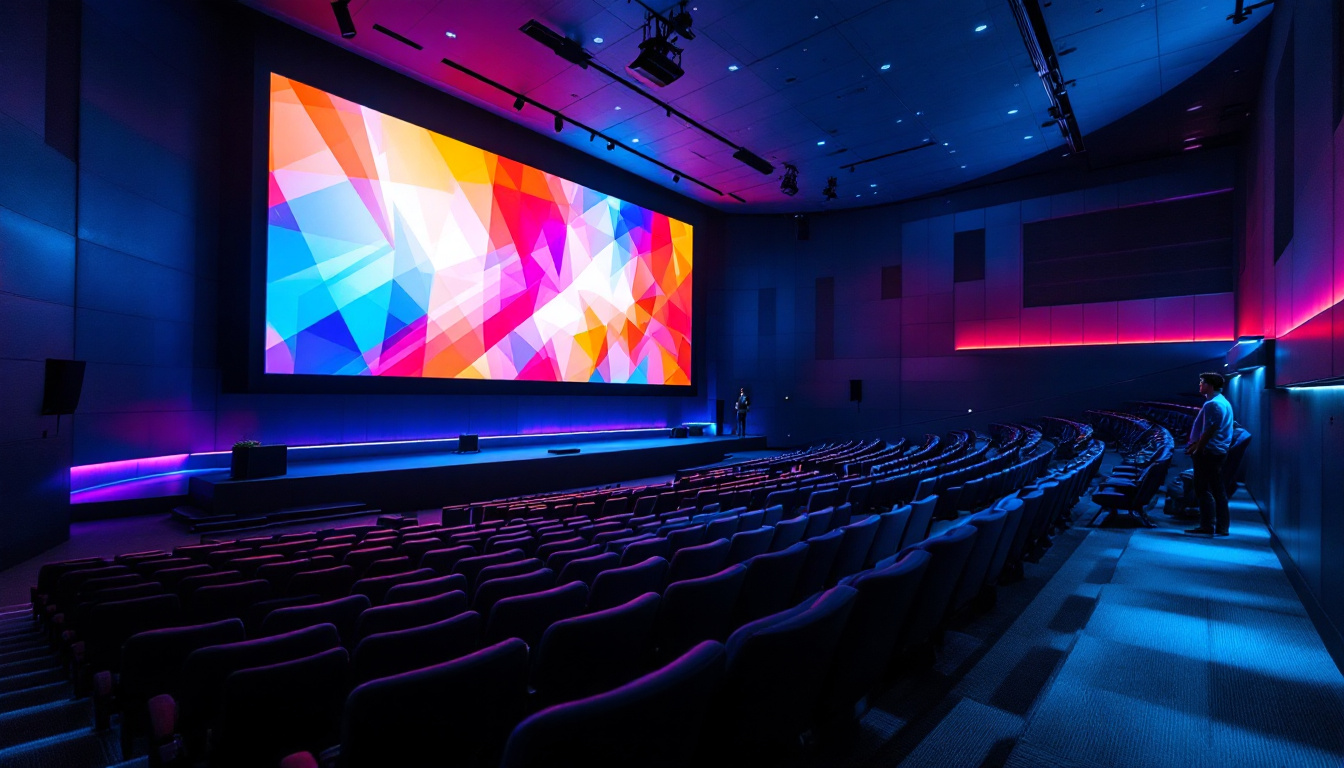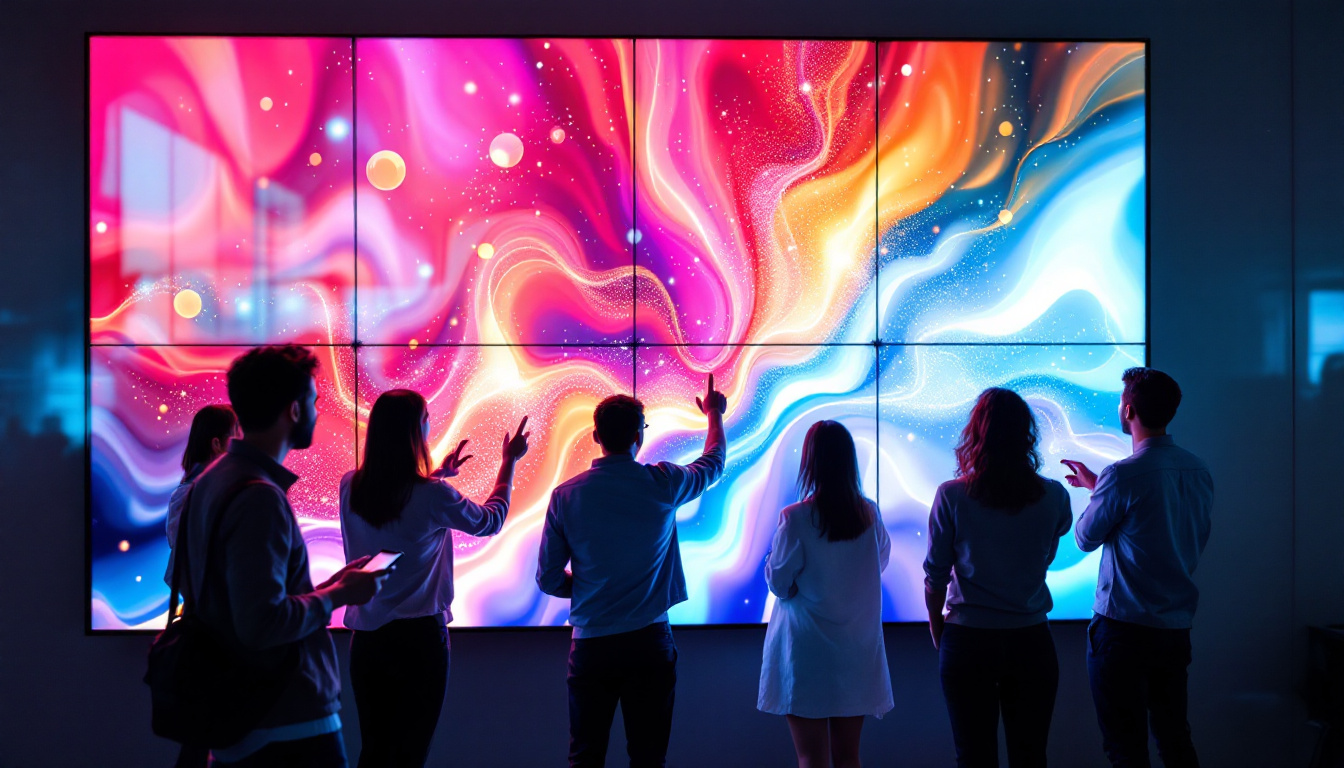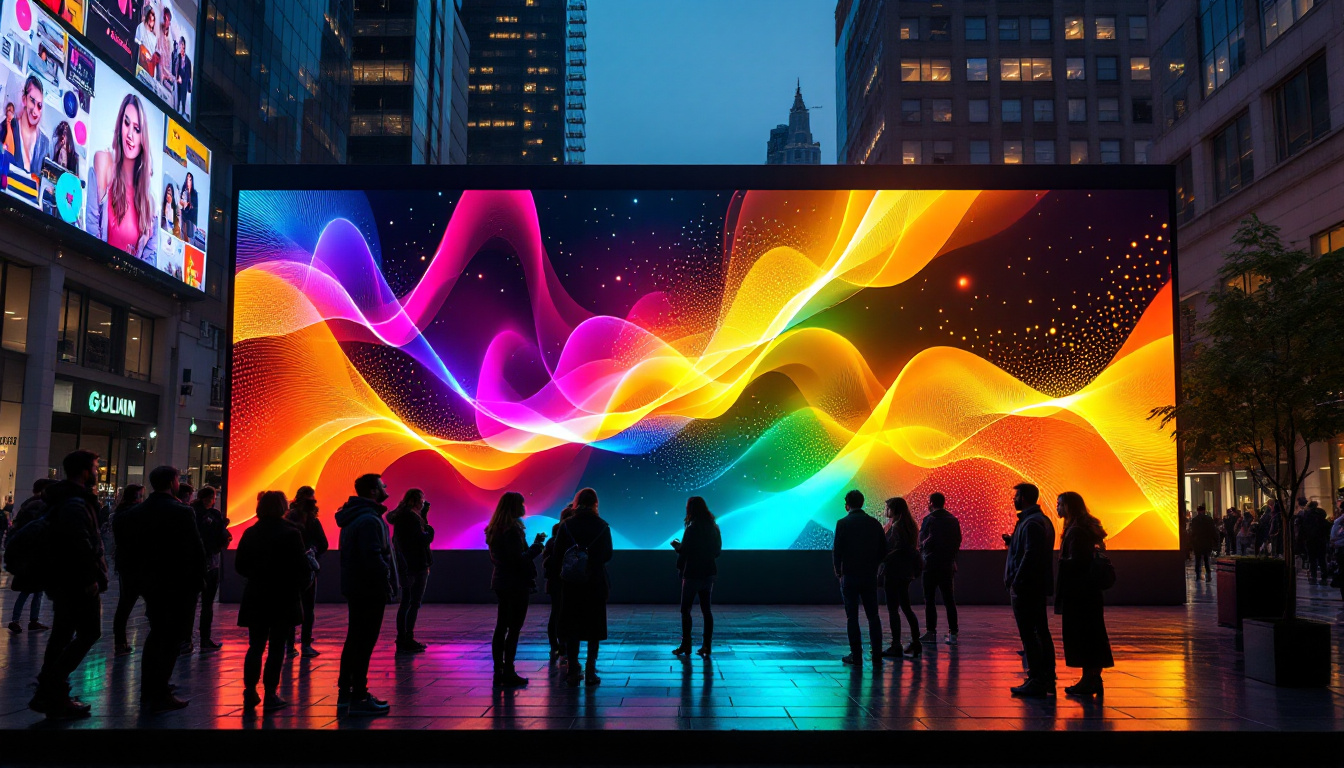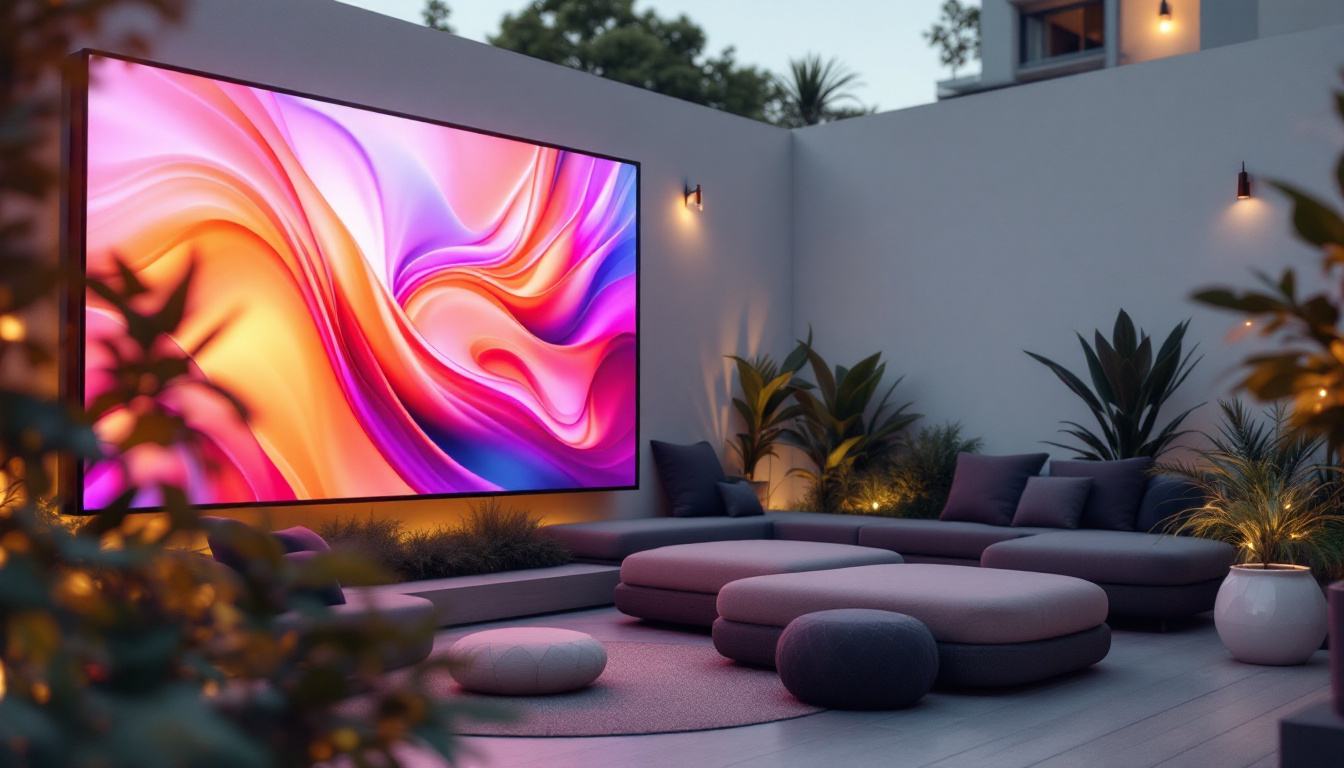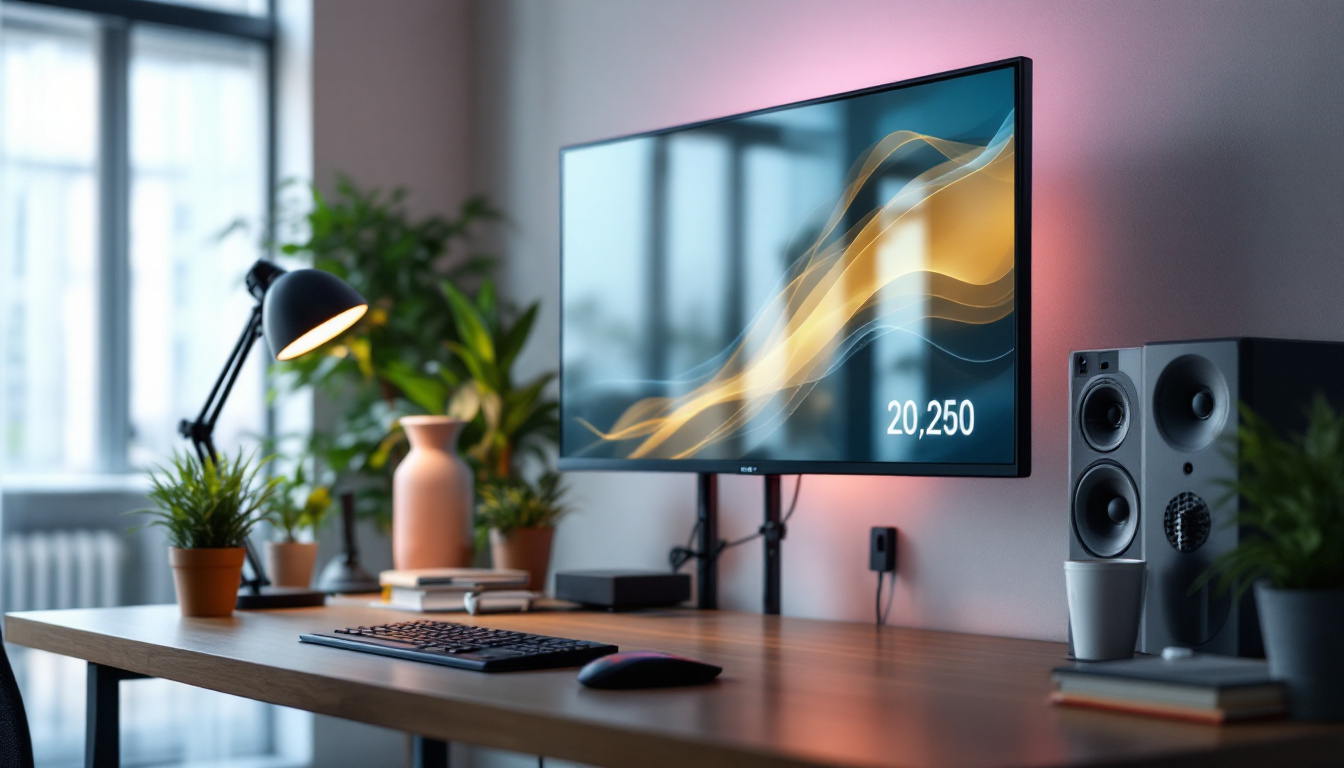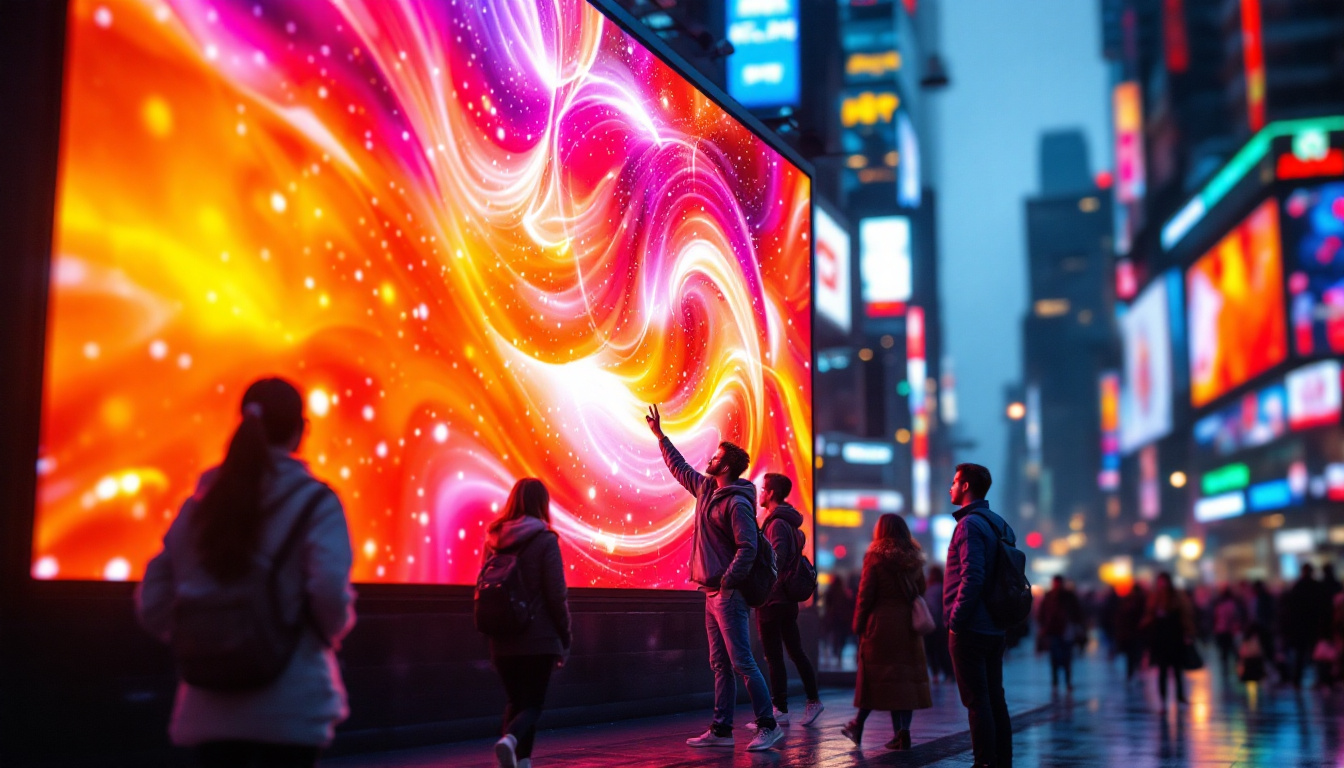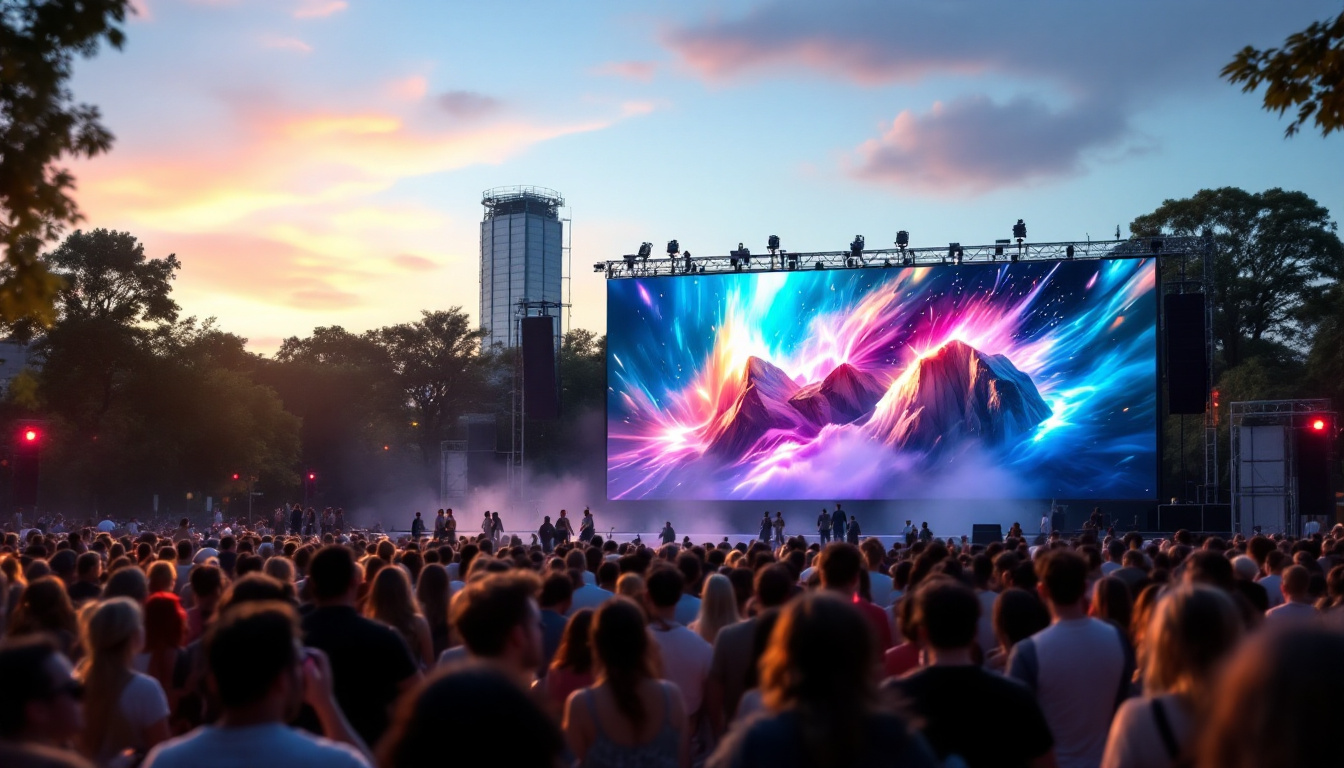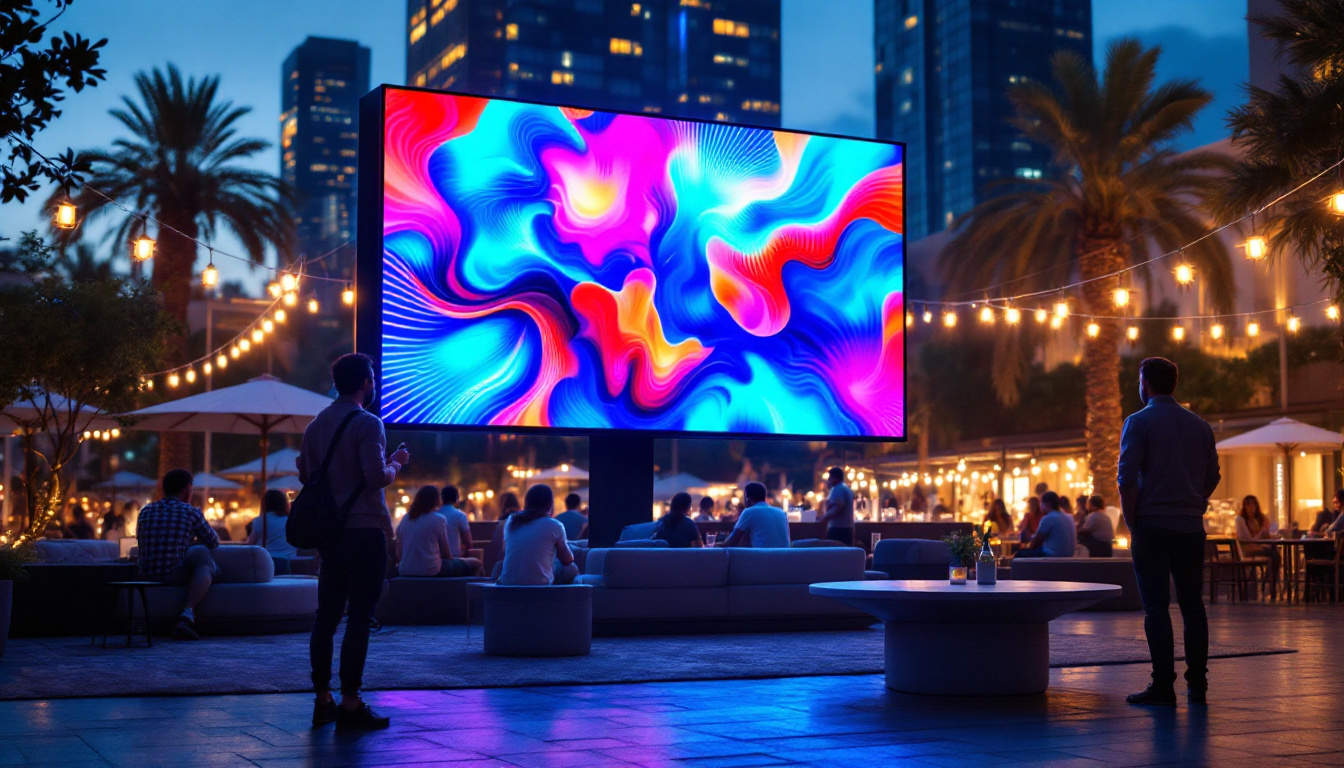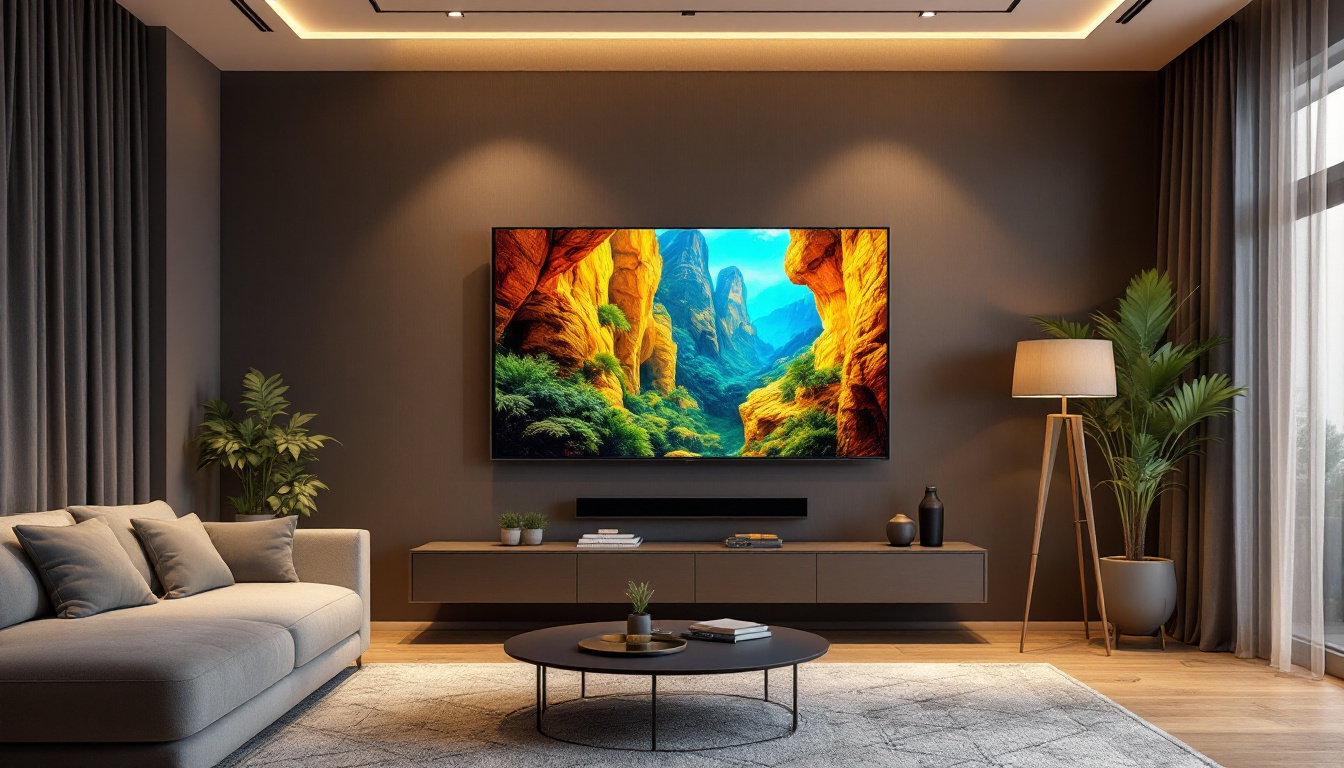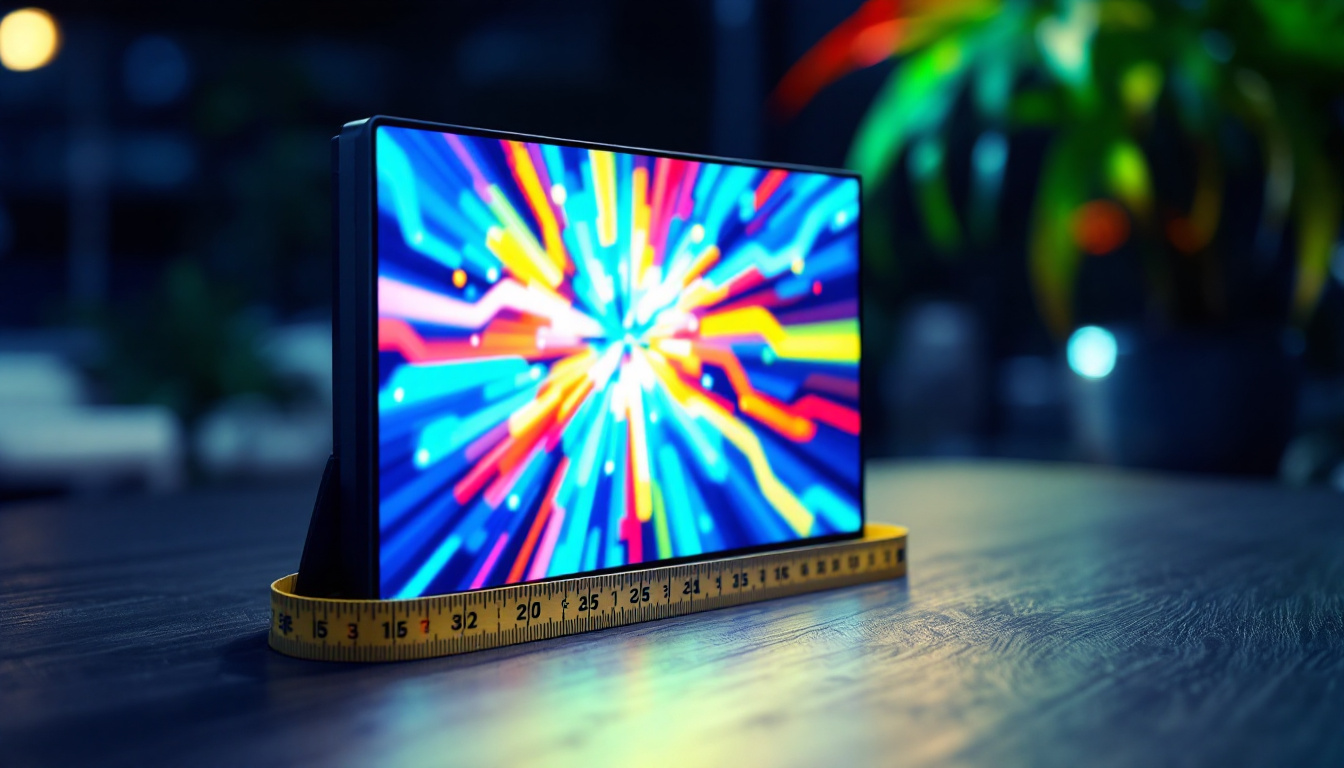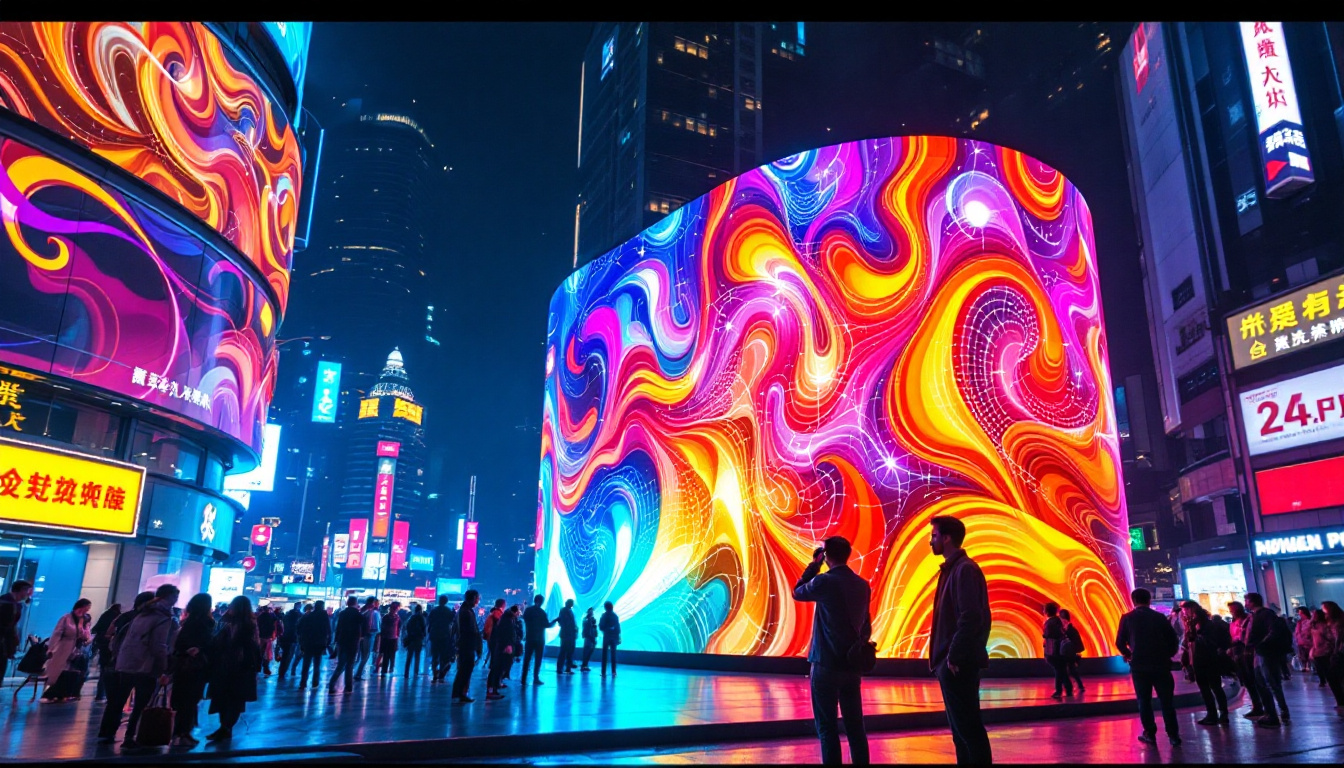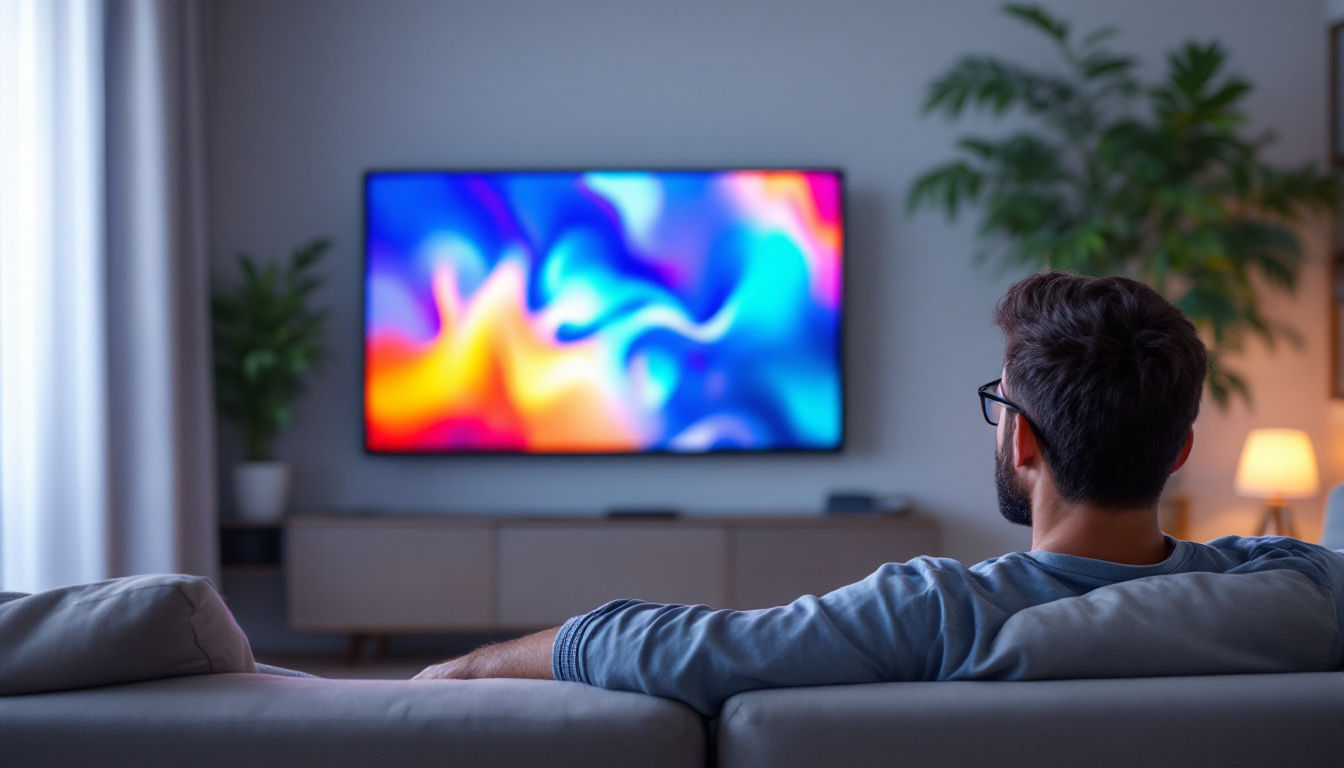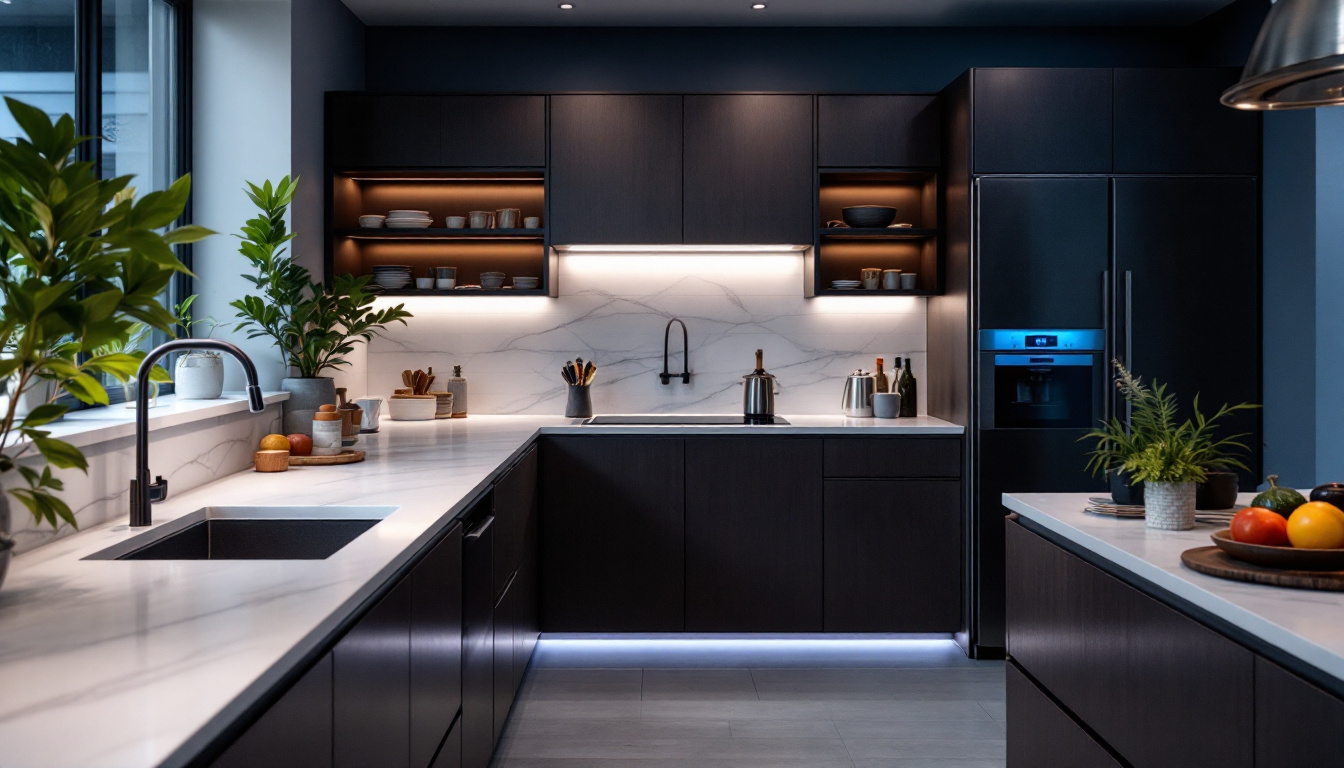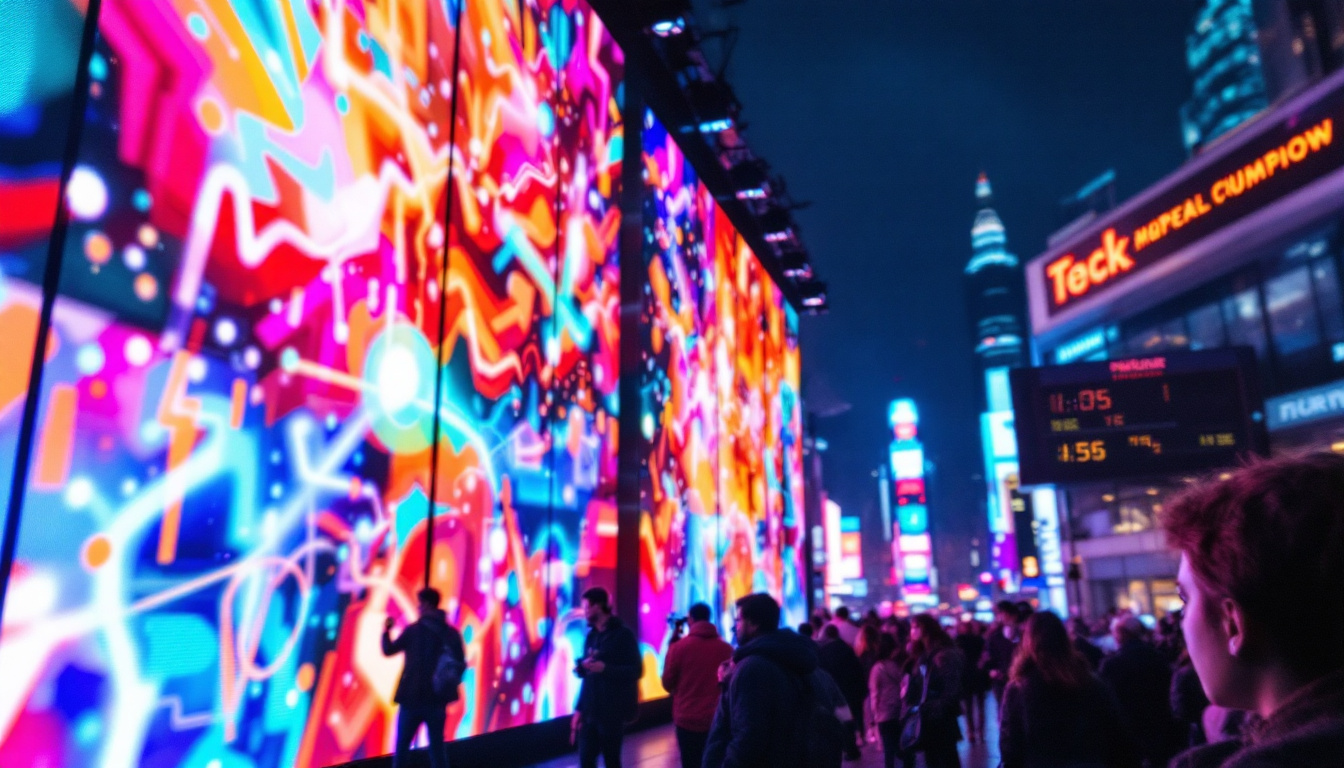In the rapidly evolving world of visual technology, the terms “TV wall projector” and “LED display” have become increasingly prominent. Whether for home theaters, corporate presentations, or public advertising, these technologies offer unique advantages that cater to different needs and environments. This article delves into the intricacies of TV wall projectors and LED displays, exploring their technologies, applications, and how to choose the right solution for your space.
Understanding TV Wall Projectors
What Is a TV Wall Projector?
A TV wall projector is a device designed to project images or video onto a large surface, typically a wall or a specialized screen. Unlike traditional televisions that have a fixed screen size, projectors allow for flexible display sizes, often exceeding 100 inches diagonally. This makes them ideal for creating immersive viewing experiences in home theaters, conference rooms, or event spaces. The versatility of projectors also extends to their ability to adapt to various environments, whether it be a cozy living room or a spacious outdoor setting, making them a popular choice for both personal and professional use.
Modern projectors use various technologies such as DLP (Digital Light Processing), LCD (Liquid Crystal Display), and LCoS (Liquid Crystal on Silicon) to produce high-quality images. The choice of technology impacts factors like brightness, color accuracy, and contrast ratio. For instance, DLP projectors are known for their sharpness and fast response times, making them suitable for fast-paced video content, while LCD projectors often excel in color reproduction, providing vibrant visuals that can enhance the viewing experience. Furthermore, advancements in projector technology have led to the development of ultra-short throw projectors, which can create large images from a very short distance, making them perfect for smaller rooms where space is a constraint.
Key Features of TV Wall Projectors
One of the most compelling features of TV wall projectors is their ability to scale the image size without losing quality, provided the projector supports high resolution. Many projectors now support 4K resolution, offering sharp and vibrant images suitable for detailed content such as movies, presentations, and gaming. This high resolution is particularly beneficial for large-screen applications, where the clarity of the image can significantly enhance the viewer’s experience, allowing for an engaging and cinematic feel that rivals that of a traditional theater.
Brightness is another critical factor. Measured in lumens, projector brightness determines how well the image can be seen in different lighting conditions. For instance, a projector with 2,500 lumens or more is generally sufficient for a dimly lit room, while spaces with ambient light may require 3,500 lumens or higher. Additionally, many modern projectors come equipped with features such as dynamic contrast adjustment and color enhancement technologies, which help to optimize image quality in varying light conditions. These advancements ensure that viewers can enjoy a clear and vivid picture, regardless of the surrounding environment.
Advantages and Limitations
Projectors offer flexibility in screen size and portability, often at a lower cost per inch compared to large LED or OLED TVs. They also allow for a minimalist setup, as the screen can be retracted or replaced with a blank wall. This feature is particularly appealing for those who prefer a clean aesthetic in their living spaces or for businesses that need to transform a room for different functions, such as meetings or social events. Moreover, many projectors now come with smart capabilities, allowing users to stream content directly from the internet without the need for additional devices, further enhancing their convenience and functionality.
However, projectors require careful consideration of ambient light and wall or screen quality to achieve optimal image clarity. The surface onto which the image is projected can significantly affect the final output, with smooth, white screens providing the best results. Additionally, lamp-based projectors may need periodic bulb replacements, though laser projectors offer longer lifespans and more consistent brightness. It’s also worth noting that while projectors can provide an impressive viewing experience, they may not be the best choice for every scenario, particularly in environments where high levels of ambient light are unavoidable or where quick setup and takedown are necessary.
Exploring LED Displays
What Are LED Displays?
LED displays are screens composed of light-emitting diodes arranged in a matrix to create images. These displays can range from small TV screens to massive video walls used in stadiums and public spaces. The technology behind LED displays has advanced significantly, enabling ultra-high-definition resolutions, vibrant colors, and excellent brightness levels.
Unlike projectors, LED displays emit their own light, which means they do not rely on external light sources. This self-illumination leads to superior contrast ratios and visibility, especially in bright environments.
Types of LED Displays
There are two primary types of LED displays used in TV walls and large-format screens:
- Direct View LED (DVLED): These displays consist of individual LEDs that form each pixel. They are known for their exceptional brightness and color accuracy, making them suitable for indoor and outdoor applications.
- LED-backlit LCD: These are traditional LCD screens illuminated by LED backlighting. They are common in consumer TVs and monitors but are less frequently used for large-scale video walls.
For large-scale TV walls, DVLED technology is preferred due to its scalability, durability, and superior image quality.
Benefits of LED Displays
LED displays offer several advantages over projectors and other display technologies:
- Brightness and Visibility: LEDs can achieve brightness levels exceeding 1,000 nits, ensuring clear visibility even in direct sunlight or brightly lit rooms.
- Durability: LED panels are robust and have long operational lifespans, often exceeding 100,000 hours.
- Seamless Image Quality: Modern LED video walls can be tiled with minimal bezels, creating an almost continuous image without distracting gaps.
- Energy Efficiency: Advances in LED technology have led to lower power consumption compared to older display types.
Comparing TV Wall Projectors and LED Displays
Image Quality and Brightness
When comparing image quality, LED displays generally outperform projectors in brightness and contrast. The self-emissive nature of LEDs allows for deep blacks and vibrant colors, which are difficult to replicate with projection technology, especially in well-lit environments.
However, projectors can still deliver excellent image quality, particularly in controlled lighting conditions. High-end 4K projectors with laser light sources can produce sharp, bright images suitable for cinematic experiences.
Installation and Space Requirements
Projectors require a certain amount of throw distance—the space between the projector and the display surface—to achieve the desired image size. This can limit placement options in smaller rooms. Additionally, projection surfaces must be smooth and appropriately colored to avoid image distortion.
LED displays, on the other hand, are modular and can be installed directly on walls, ceilings, or custom frames. Their slim profile and mounting flexibility make them suitable for a variety of environments, including tight spaces where projector throw distance is impractical.
Cost Considerations
Initial costs for LED video walls tend to be higher than for projectors, particularly for large, high-resolution installations. However, LED displays often have lower maintenance costs and longer lifespans, which can offset the upfront investment over time.
Projectors are generally more affordable initially, especially for smaller setups, but lamp replacements and potential screen purchases add to ongoing expenses. Laser projectors, while more expensive upfront, reduce maintenance costs due to their longer-lasting light sources.
Applications and Use Cases
Home Entertainment
For home theaters, projectors remain a popular choice due to their ability to create large, immersive screens at a relatively low cost. Advances in ultra-short-throw projectors allow installation close to the wall, reducing space requirements and minimizing shadows.
LED displays are gaining traction in luxury home theaters and media rooms where budget allows, offering unparalleled brightness and color fidelity. Their slim design also integrates seamlessly with modern interior aesthetics.
Corporate and Educational Environments
In offices and classrooms, LED video walls provide clear, bright visuals that enhance presentations and collaborative work. Their scalability allows for customized screen sizes, from small meeting rooms to large auditoriums.
Projectors are still widely used in these settings due to their affordability and flexibility, especially where budget constraints exist or where temporary setups are needed.
Public Spaces and Advertising
Outdoor advertising, stadiums, and public information displays rely heavily on LED technology. The high brightness and weather-resistant properties of LED panels make them ideal for these demanding environments.
Projectors are less common outdoors due to challenges with ambient light and weather protection but can be used for temporary events or indoor exhibitions.
Choosing the Right Solution for Your Needs
Assessing Your Environment
Understanding the environment where the display will be used is crucial. Consider factors such as ambient light, viewing distance, room size, and installation constraints. For bright or outdoor environments, LED displays are generally more effective. For controlled lighting and flexible screen sizes, projectors may be preferable.
Budget and Maintenance
Evaluate both initial costs and long-term maintenance expenses. While projectors may seem more affordable initially, lamp replacements and screen purchases add to lifetime costs. LED displays require a higher upfront investment but offer lower maintenance and longer service life.
Content and Usage
The type of content displayed also influences the choice. For dynamic, high-resolution video content, LED displays provide superior color accuracy and brightness. For cinematic experiences or presentations requiring large, flexible screen sizes, projectors offer unmatched scalability.
Future Trends in TV Wall Projectors and LED Displays
Emergence of MicroLED Technology
MicroLED is an emerging display technology that combines the benefits of LED and OLED displays, offering high brightness, excellent color accuracy, and energy efficiency. This technology is expected to revolutionize large-format displays, including TV walls, by providing thinner, more flexible, and more durable screens.
Advances in Laser Projectors
Laser projectors are becoming more affordable and widespread, offering longer lifespans, higher brightness, and better color performance than traditional lamp-based projectors. These advances are expanding the use cases for projectors in both home and commercial settings.
Integration with Smart Technologies
Both LED displays and projectors are increasingly integrating with smart home and building automation systems. Features such as voice control, AI-based image optimization, and seamless connectivity are enhancing user experience and operational efficiency.
Conclusion
Choosing between a TV wall projector and an LED display depends on a variety of factors, including environment, budget, and intended use. Projectors offer flexible, large-scale viewing at a competitive price, especially in controlled lighting conditions. LED displays provide unmatched brightness, durability, and image quality, making them ideal for bright, high-traffic, or outdoor environments.
As technology continues to advance, the lines between these display types are blurring, with innovations like laser projectors and MicroLED promising new possibilities. Understanding the strengths and limitations of each technology will help consumers and businesses make informed decisions that maximize their visual experience and investment.
Discover LumenMatrix LED Display Solutions
Ready to elevate your visual experience with unparalleled brightness, durability, and image quality? LumenMatrix is at the forefront of LED display innovation, offering a diverse range of products tailored to meet your specific needs. From captivating Indoor and Outdoor LED Wall Displays to dynamic Vehicle and Sports LED Displays, our solutions are designed to make your brand stand out. Embrace the future of visual communication with our Custom, All-in-One, and Transparent LED Displays, and see how our technology can transform your space. Check out LumenMatrix LED Display Solutions today and step into a world of vivid imagery and impactful messaging.


